What Was The First Fast Food Restaurant In The Us? Discover the origins of this culinary phenomenon with FOODS.EDU.VN. We’ll take you on a delicious journey back in time, exploring the pioneering establishments that shaped the fast food landscape. Join us as we uncover the stories behind these iconic brands and their lasting impact on American culture and global food trends. Prepare to delve into the history of quick-service dining, hamburger chains, and drive-in restaurants.
1. The Dawn of Fast Food: A Quick Look
The concept of convenient, on-the-go meals has existed across cultures for centuries. However, the modern fast food industry, characterized by standardized menus, quick service, and franchising, took root in the United States in the early 20th century. These early establishments focused on efficiency and consistency, aiming to provide customers with a reliable dining experience regardless of location. They emphasized quick preparation, standardized menus, and affordable prices, transforming how Americans ate and paving the way for the global fast-food phenomenon we know today. This innovative approach to dining revolutionized the food industry and significantly impacted American culture.
2. Defining “Fast Food”: More Than Just a Quick Bite
Before we dive into identifying the first fast food restaurant, let’s define what exactly constitutes “fast food.” It’s more than just food prepared quickly. Key characteristics include:
- Speed of Service: Orders are prepared and served rapidly.
- Standardized Menu: A consistent menu is offered across all locations.
- Affordability: Prices are generally lower than full-service restaurants.
- Convenience: Designed for easy consumption, often on the go.
- Franchising (Often): Many fast food chains operate on a franchise model.
These elements combine to create a distinct dining experience focused on speed, efficiency, and predictability. Let’s explore some of the contenders for the title of “first” and see how they measure up against these criteria.
3. Contender #1: A&W Root Beer (1919)
A&W Root Beer often claims the title of the oldest fast food chain, tracing its roots back to 1919. Roy W. Allen opened a root beer stand in Lodi, California, serving his homemade brew to celebrate the homecoming of World War I veterans.
Allen’s root beer became a local hit, and in 1922, he partnered with Frank Wright, giving rise to the A&W name. In 1925, A&W began franchising, marking a significant step toward the modern fast food model.
| Key Facts About A&W | Details |
|---|---|
| Year Founded | 1919 |
| Founders | Roy W. Allen and Frank Wright |
| Franchising Started | 1925 |
| Current Locations | 1,000+ |
| Headquarters | Lexington, Kentucky, USA |
| Signature Product | Root Beer |
| Menu Expansion | Burgers, hot dogs, cheese curds, and other fast food staples were added later. |
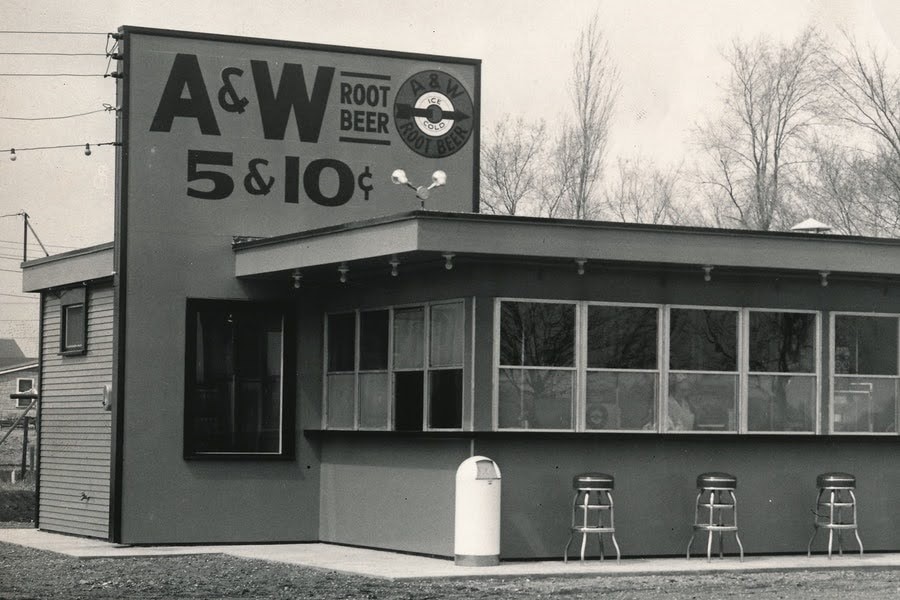
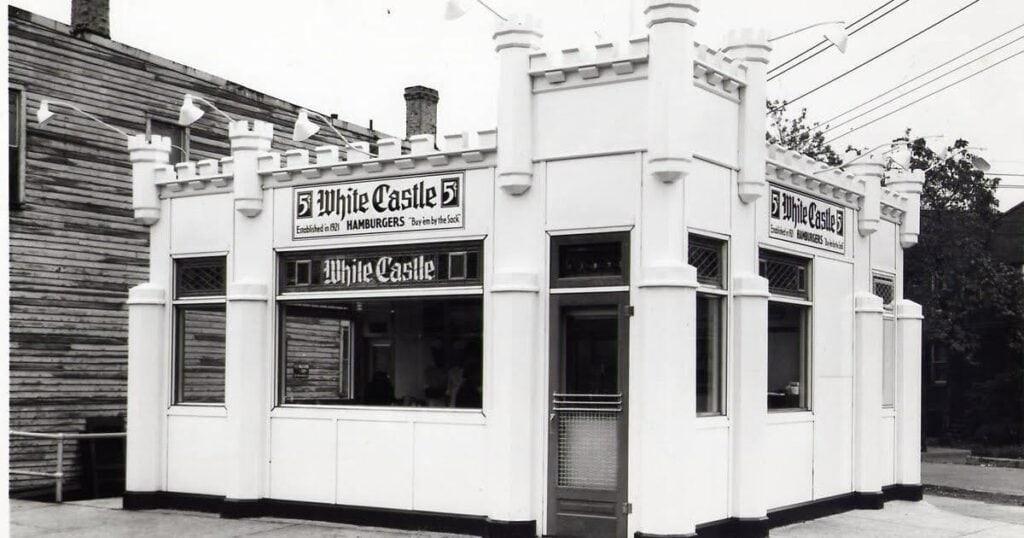
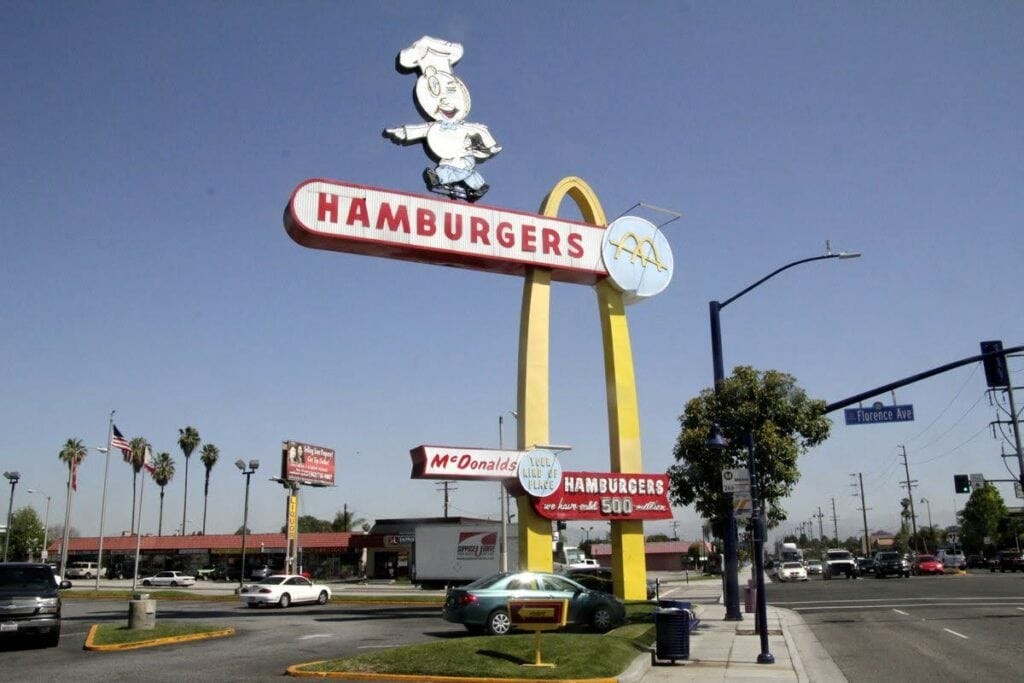
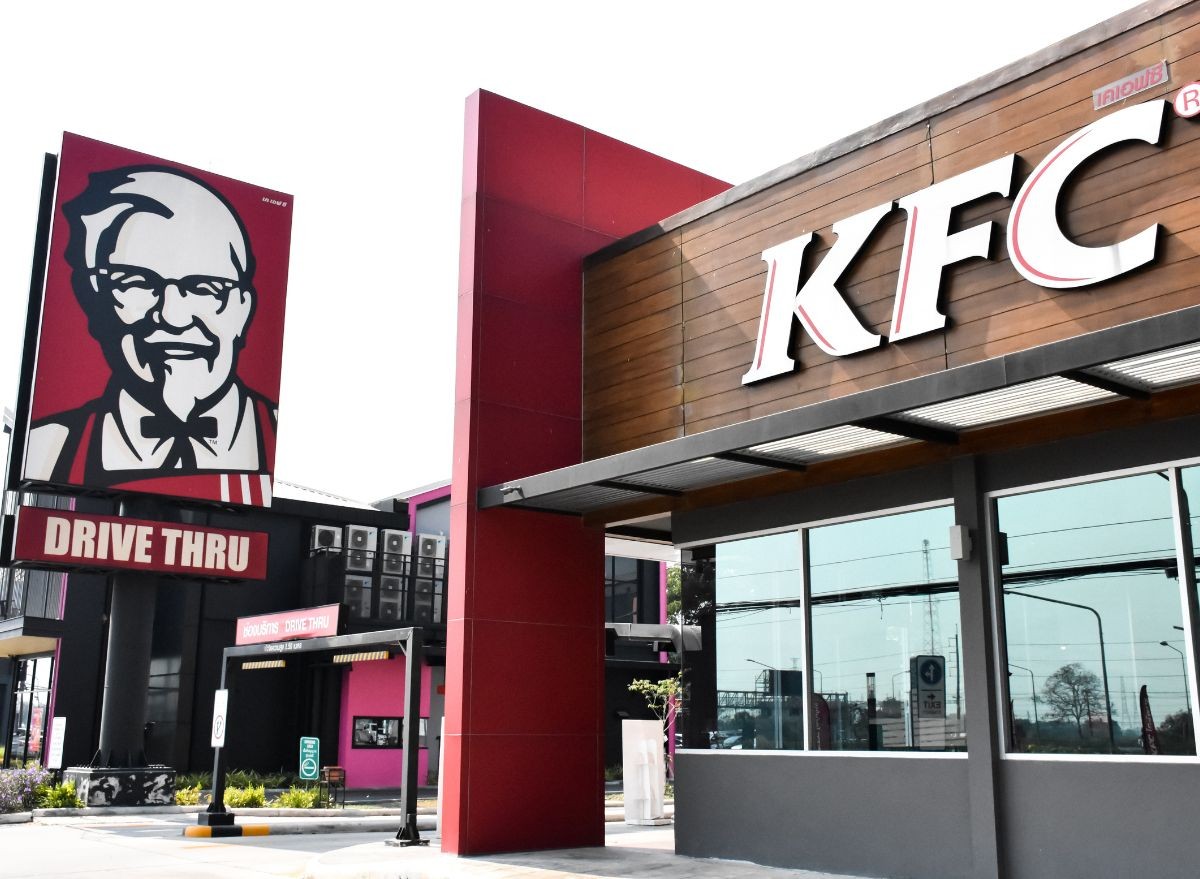
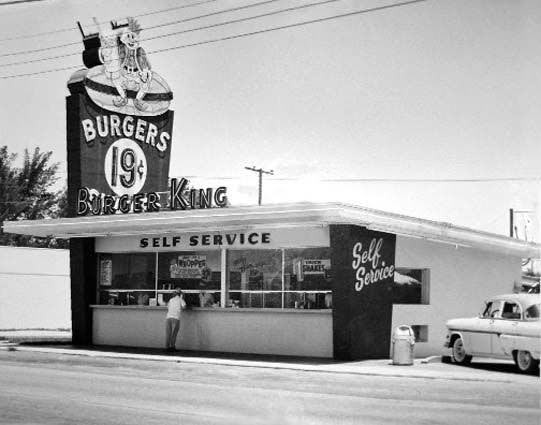
Why A&W is Significant: A&W pioneered the concept of franchising in the restaurant industry, laying the groundwork for the rapid expansion of fast food chains.
4. Contender #2: White Castle (1921)
While A&W focused on beverages, White Castle emerged as a pioneer in the hamburger segment. Founded in 1921 by Billy Ingram and Walter Anderson in Wichita, Kansas, White Castle is often credited as the first true fast food restaurant chain. They are the oldest fast-food burger chain around the world
At the time, hamburgers had a questionable reputation, often associated with unsanitary conditions. White Castle aimed to change this perception by emphasizing cleanliness and transparency. They ground their beef in full view of customers and maintained spotless restaurants, building trust in their product.
| Key Facts About White Castle | Details |
|---|---|
| Year Founded | 1921 |
| Founders | Billy Ingram and Walter Anderson |
| Franchising Started | Never (all locations company-owned) |
| Current Locations | 345+ |
| Headquarters | Columbus, Ohio, USA |
| Signature Product | Sliders (small, square hamburgers) |
| Innovation | Emphasized cleanliness and standardized production |
Why White Castle is Significant: White Castle revolutionized the hamburger industry by standardizing production, focusing on cleanliness, and creating a consistent dining experience. They are the reason why hamburgers became a fast-food staple and a common food across the world.
5. A Side-by-Side Comparison: A&W vs. White Castle
| Feature | A&W Root Beer (1919) | White Castle (1921) |
|---|---|---|
| Primary Product | Root Beer | Hamburgers |
| Food Focus | Limited initially | Central from the beginning |
| Franchising | Yes, starting in 1925 | No, all locations company-owned |
| Impact on Industry | Pioneered restaurant franchising | Revolutionized hamburger production and consumer trust |
| “First” Claim | Oldest fast food chain due to franchising | First fast food restaurant focused on a food item |
Both A&W and White Castle played pivotal roles in shaping the fast food industry. A&W’s early franchising efforts established a model for rapid expansion, while White Castle’s focus on hamburgers and standardized production set the stage for the modern fast food restaurant.
6. The Rise of Drive-Ins: Speed and Convenience Take Center Stage
As the automobile became more prevalent, drive-in restaurants emerged as a natural evolution of the fast food concept. These establishments allowed customers to order and receive their food without leaving their cars, further enhancing convenience.
One notable example is Kirby’s Pig Stand, which claimed to be the “first drive-in restaurant in the country.” While its claim to the absolute first is debatable, it undeniably popularized the drive-in concept, which eventually spread across the nation.
7. The Pioneers of the Modern Fast Food Era
While A&W and White Castle laid the groundwork, several other chains emerged in the mid-20th century, solidifying the fast food model we know today. These include:
- McDonald’s (1940): Revolutionized the industry with its “Speedee Service System” and focus on efficiency.
- KFC (1952): Popularized fried chicken as a fast food staple and established a global brand.
- Burger King (1954): Introduced the flame-broiled burger and became a major competitor to McDonald’s.
These chains, along with others, refined the fast food formula, emphasizing standardization, franchising, and marketing to create a global phenomenon.
8. McDonald’s: The Speedee Service System
Founded by Richard and Maurice McDonald in 1940, McDonald’s initially served barbecue. However, the brothers soon realized that hamburgers were their most profitable item. In 1948, they revamped their restaurant, introducing the “Speedee Service System,” an assembly line approach to hamburger production.
This system streamlined operations, reduced costs, and enabled them to serve customers faster than ever before. Ray Kroc joined McDonald’s in 1954 and played a crucial role in franchising the restaurant and turning it into the global powerhouse it is today.
| Key Facts About McDonald’s | Details |
|---|---|
| Year Founded | 1940 |
| Founders | Richard and Maurice McDonald |
| Franchising Started | 1955 (under Ray Kroc) |
| Current Locations | 40,000+ |
| Headquarters | Chicago, Illinois, USA |
| Signature Product | Big Mac, French Fries |
| Innovation | Speedee Service System, standardized operations, extensive franchising, global reach |
The Impact of McDonald’s: McDonald’s revolutionized the fast food industry with its efficient production system and aggressive franchising, setting the standard for other chains to follow.
9. KFC: The Colonel’s Secret Recipe
Harland Sanders, better known as Colonel Sanders, began selling fried chicken from his roadside restaurant in Corbin, Kentucky, in 1930. He perfected his “Original Recipe” of 11 herbs and spices and, in 1952, began franchising Kentucky Fried Chicken (KFC).
KFC’s focus on a single menu item (fried chicken) and Sanders’ charismatic persona helped propel the chain to global success.
| Key Facts About KFC | Details |
|---|---|
| Year Founded | 1952 (franchising began) |
| Founder | Harland Sanders |
| Franchising Started | 1952 |
| Current Locations | 25,000+ |
| Headquarters | Louisville, Kentucky, USA |
| Signature Product | Fried Chicken |
| Innovation | Standardized recipe, pressure frying technique, strong brand identity (Colonel Sanders) |
The Impact of KFC: KFC popularized fried chicken as a fast food option and demonstrated the power of a strong brand identity and a unique menu item.
10. Burger King: The Home of the Whopper
Founded as Insta-Burger King in 1954 by Keith J. Kramer and Matthew Burns in Jacksonville, Florida, the chain initially used “Insta-Broiler” machines to cook their burgers. After facing financial difficulties, David Edgerton and James McLamore purchased the company and renamed it Burger King in 1959.
Burger King introduced the flame-broiled burger as a differentiating factor and launched the iconic Whopper sandwich in 1957.
| Key Facts About Burger King | Details |
|---|---|
| Year Founded | 1954 |
| Founders | Keith J. Kramer and Matthew Burns |
| Franchising Started | 1959 |
| Current Locations | 18,700+ |
| Headquarters | Miami-Dade County, Florida, USA |
| Signature Product | Whopper |
| Innovation | Flame-broiled burgers, focus on customization, strong competitor to McDonald’s |
The Impact of Burger King: Burger King established itself as a major competitor to McDonald’s, offering a different approach to burgers and focusing on customization.
11. The Fast Food Landscape Today: A Global Phenomenon
The fast food industry has evolved significantly since its early days. Today, it’s a global phenomenon with countless chains offering diverse cuisines and catering to a wide range of tastes. The industry continues to innovate, with trends like:
- Healthier Options: Responding to consumer demand for healthier choices.
- Technological Advancements: Utilizing mobile ordering, kiosks, and delivery services.
- Sustainable Practices: Implementing eco-friendly packaging and sourcing.
- Menu Diversification: Offering vegetarian, vegan, and gluten-free options.
The fast food industry is constantly adapting to changing consumer preferences and technological advancements.
12. Exploring Other Early Fast Food Contenders
Besides the giants we’ve discussed, several other establishments played a significant role in shaping the fast food landscape:
- Dairy Queen (1940): Known for its soft-serve ice cream and expanding into hot food items.
- In-N-Out Burger (1948): Cult following due to its regional availability and focus on quality ingredients.
- Jack in the Box (1951): One of the first to use the two-way intercom system for drive-thrus.
- Dunkin’ (1948): Initially Dunkin’ Donuts, it revolutionized the coffee and pastry segment of the fast food industry.
- Sonic Drive-In (1953): Famous for its carhop service and innovative menu items.
These chains contributed to the diversity and innovation within the fast food industry.
13. The Two-Way Intercom System: A Game Changer
Jack in the Box, founded in 1951 by Robert O. Peterson, was a pioneer in drive-thru technology. Peterson improved upon existing intercom systems and established the first two-way intercom system. This innovation significantly enhanced the speed and convenience of drive-thru service, becoming a standard feature in fast food restaurants worldwide.
14. Dunkin’: More Than Just Donuts
Founded in 1948 by William Rosenberg as Open Kettle, later renamed Dunkin’ Donuts, this chain revolutionized the coffee and pastry segment of the fast food industry. Rosenberg aimed to serve fresh coffee and donuts quickly and courteously. Dunkin’ expanded its menu over time to include breakfast sandwiches and other items and is now rebranding itself as simply Dunkin’.
15. In-N-Out Burger: A Cult Following
Founded in 1948 by Harry and Esther Snyder in Baldwin Park, California, In-N-Out Burger has a dedicated cult following due to its regional availability and commitment to quality ingredients. The chain doesn’t franchise and focuses on simple, high-quality food.
16. Dairy Queen: From Soft Serve to Hot Eats
Dairy Queen, founded in 1940 by John Fremont McCullough, initially only sold soft-serve ice cream. The chain later expanded its menu to include hot foods, such as burgers, chicken strips, and fries. Dairy Queen is known for its Blizzard treats and its iconic curl on top of its soft-serve cones.
17. Sonic Drive-In: Carhops and Innovation
Sonic Drive-In, founded in 1953 by Troy Smith, is known for its carhop service and innovative menu items. Smith installed drive-in speakers, hired carhops, and created the Sonic experience we know today.
18. The Influence of World War II on Fast Food
World War II significantly impacted the development of the fast food industry. The war effort led to food rationing and labor shortages, prompting restaurants to find ways to serve customers quickly and efficiently. The rise of the automobile after the war further fueled the growth of drive-in restaurants and the fast food concept.
19. The Role of Franchising in Fast Food Expansion
Franchising played a crucial role in the rapid expansion of fast food chains. It allowed entrepreneurs to open their own restaurants while benefiting from the brand recognition, standardized menu, and operational support of the parent company. A&W’s early franchising efforts paved the way for other chains like McDonald’s and KFC to expand rapidly across the country and the world.
20. The Evolution of Fast Food Menus: From Limited to Diverse
Early fast food restaurants typically had limited menus, focusing on a few key items like hamburgers, fries, and milkshakes. Over time, menus expanded to include a wider variety of options, such as chicken, salads, and international cuisine. Today, fast food restaurants cater to a diverse range of tastes and dietary preferences.
21. The Impact of Technology on the Fast Food Industry
Technology has had a profound impact on the fast food industry, from the two-way intercom system to mobile ordering and delivery services. Technology has streamlined operations, improved efficiency, and enhanced the customer experience.
22. The Controversy Surrounding Fast Food: Health and Social Issues
Fast food has faced criticism over its health impacts, including its contribution to obesity and related health problems. Social issues, such as low wages and working conditions, have also been raised. However, the industry is responding to these concerns by offering healthier options, improving wages, and implementing sustainable practices.
23. The Future of Fast Food: Innovation and Adaptation
The fast food industry is constantly evolving. Future trends include:
- Increased Automation: Robots and AI playing a greater role in food preparation and service.
- Personalized Nutrition: Menus tailored to individual dietary needs and preferences.
- Virtual Restaurants: Food prepared in ghost kitchens for delivery only.
- Sustainable Practices: Continued focus on eco-friendly packaging and sourcing.
The future of fast food promises to be innovative and adaptive, catering to changing consumer needs and preferences.
24. Fast Food and Pop Culture: An Enduring Relationship
Fast food has become deeply ingrained in American pop culture. From iconic mascots like Ronald McDonald and the Burger King to movie references and advertising slogans, fast food has shaped our cultural landscape.
25. The Enduring Appeal of Fast Food: Convenience, Price, and Taste
Despite the controversies, fast food continues to be a popular choice for many consumers. Its convenience, affordability, and familiar taste are powerful draws. The industry’s ability to adapt to changing consumer preferences and technological advancements ensures its continued relevance.
26. A Deep Dive into Culinary Techniques
Let’s take a moment to appreciate the culinary techniques that make fast food so, well, fast. Standardized cooking times and temperatures are crucial. For example, fries are often cooked at around 350°F (175°C) for a specific duration to achieve that perfect crisp. Burger patties are grilled to a precise internal temperature to ensure food safety and consistency.
27. Nutritional Data and Fast Food: A Closer Look
Understanding the nutritional content of fast food is essential for making informed choices. Most chains now provide detailed nutritional information, including calorie counts, macronutrient breakdowns, and allergen information.
| Nutrient | Example (Typical Burger) | Daily Recommended Intake (Approximate) |
|---|---|---|
| Calories | 500-800 | 2000-2500 |
| Fat | 25-40g | 44-78g |
| Sodium | 800-1200mg | Less than 2300mg |
| Carbohydrates | 40-60g | 225-325g |
| Protein | 20-30g | 50-60g |
Remember, moderation is key. You can still enjoy fast food as part of a balanced diet.
28. Latest Trends in Fast Food: What’s New and Exciting?
The fast food industry never stands still. Some of the latest trends include:
- Plant-Based Options: Vegetarian and vegan burgers, chicken alternatives, and more.
- International Flavors: Chains are experimenting with global cuisines and flavors.
- Gourmet Fast Food: High-end ingredients and chef-driven menus in a fast-casual setting.
- Customization: More options to personalize your order with different toppings and sauces.
29. How FOODS.EDU.VN Enhances Your Culinary Journey
At FOODS.EDU.VN, we are committed to providing you with in-depth knowledge and valuable resources about all aspects of food, from its history and cultural significance to cooking techniques and nutritional information. Whether you’re curious about the origins of fast food or seeking inspiration for your next culinary adventure, FOODS.EDU.VN is your trusted source for all things food-related.
30. FOODS.EDU.VN: Your Go-To Resource for Culinary Insights
We understand the challenges of finding reliable and easy-to-follow recipes. That’s why FOODS.EDU.VN offers detailed cooking guides and shares in-depth knowledge of ingredients, cooking techniques, and culinary history. We also highlight unique dishes from various cultures, providing instructions on how to adjust recipes and substitute ingredients to fit your preferences and nutritional needs.
31. Connecting with FOODS.EDU.VN
Ready to explore more culinary treasures? Visit FOODS.EDU.VN to discover a wealth of information, from detailed recipes to expert insights. Connect with us today and expand your culinary horizons.
Contact Us:
- Address: 1946 Campus Dr, Hyde Park, NY 12538, United States
- WhatsApp: +1 845-452-9600
- Website: FOODS.EDU.VN
32. A Call to Culinary Adventure
Hungry for more? Visit FOODS.EDU.VN today and unlock a world of culinary knowledge and inspiration. Discover detailed recipes, explore diverse cuisines, and gain valuable insights into the art and science of food. Your culinary journey starts here!
33. Conclusion: The First Fast Food Restaurant Legacy
So, what was the first fast food restaurant in the US? While the answer may depend on your definition, A&W and White Castle stand out as early pioneers. A&W revolutionized the industry with its franchising model, while White Castle transformed the hamburger from a questionable food item to a fast food staple. These chains, along with McDonald’s, KFC, Burger King, and others, shaped the fast food landscape we know today, creating a global phenomenon that continues to evolve.
FAQ: Unveiling the Secrets of Fast Food History
-
Which is older, McDonald’s or Burger King?
McDonald’s was founded in 1940, while Burger King was founded in 1954. McDonald’s is older. -
What was the first fast food item ever sold?
It’s difficult to pinpoint the absolute first, but root beer (A&W) and hamburgers (White Castle) were among the earliest and most influential fast food items. -
When did drive-thru restaurants become popular?
Drive-thrus gained popularity in the mid-20th century as car ownership increased. -
Who invented the fast food franchising model?
A&W Root Beer is credited with pioneering the fast food franchising model in 1925. -
What is the “Speedee Service System” and who invented it?
The “Speedee Service System” was an assembly line approach to hamburger production developed by Richard and Maurice McDonald in 1948. -
Why is fast food so popular?
Fast food’s popularity is due to its convenience, affordability, and consistent taste. -
Is fast food unhealthy?
Fast food can be high in calories, fat, and sodium. However, many chains now offer healthier options. -
What are some of the latest trends in the fast food industry?
Latest trends include plant-based options, international flavors, gourmet fast food, and increased customization. -
How has technology impacted the fast food industry?
Technology has streamlined operations, improved efficiency, and enhanced the customer experience through mobile ordering, kiosks, and delivery services. -
How can I find healthy options at fast food restaurants?
Look for grilled or baked items, salads with light dressings, and smaller portion sizes. Check nutritional information to make informed choices.
By understanding the history, impact, and evolution of fast food, we can better appreciate its role in our culture and make informed choices about our eating habits. Remember to visit foods.edu.vn for more culinary insights and resources.